Powerplant V
Abandoned Factory Italy
Centrale Idroelettrica is a former hydroelectric power station in Italy. It was built in the early 1900’s, in a utilitarian variation of Art Deco architecture which was popular for large industrial complexes of these decades.
This location is sometimes also known as Powerplant V.
The hydroelectric power station was once part of a large electrochemical complex, providing energy for adjacent chemical plants which supplied the nearby steel industry. It is said that the chemical plant produced a lot of pollution and that the fumes and the dust caused damage to the surrounding area.
This strategically important steel producing region manufactured military-grade metals, for use in boat building as well as other war-related products. Nearly ten thousands workers in this region worked in the steel mills during the Second World War.
The powerplant was severely damaged during bomb raids, in an attempt to impede Italy’s war efforts.
Centrale Idroelettrica operated at reduced capacity after the war damage, enjoying some belated restoration work in the 1960’s. It finally ceased electricity production in the 1970’s, and now much of the site lays in ruins.
We entered the main turbine hall through a dark corridor, crossing the walkway towards the control room. We paused to take the iconic shot looking towards the distinctive concrete bunker-like structure ahead. There was only one turbine left in each hall, and the remains of a rusty and stripped-out control panel in the control room.
Below the turbine halls, and underground rail system would have been used to move the replacement parts and tools used to service the turbines. Large shafts tens of meters deep were carved out of the rock, and the cargo would have been lowered onto the trolleys via pulleys and cranes at ground level.
Water can be heard rushing under and around the powerplant, fed by the recent rainfall. Numerous access hatches, now open, illustrated how close the water was beneath out feet. Not a reassuring thought, when standing on crumbling concrete which is nearly 100 years old.
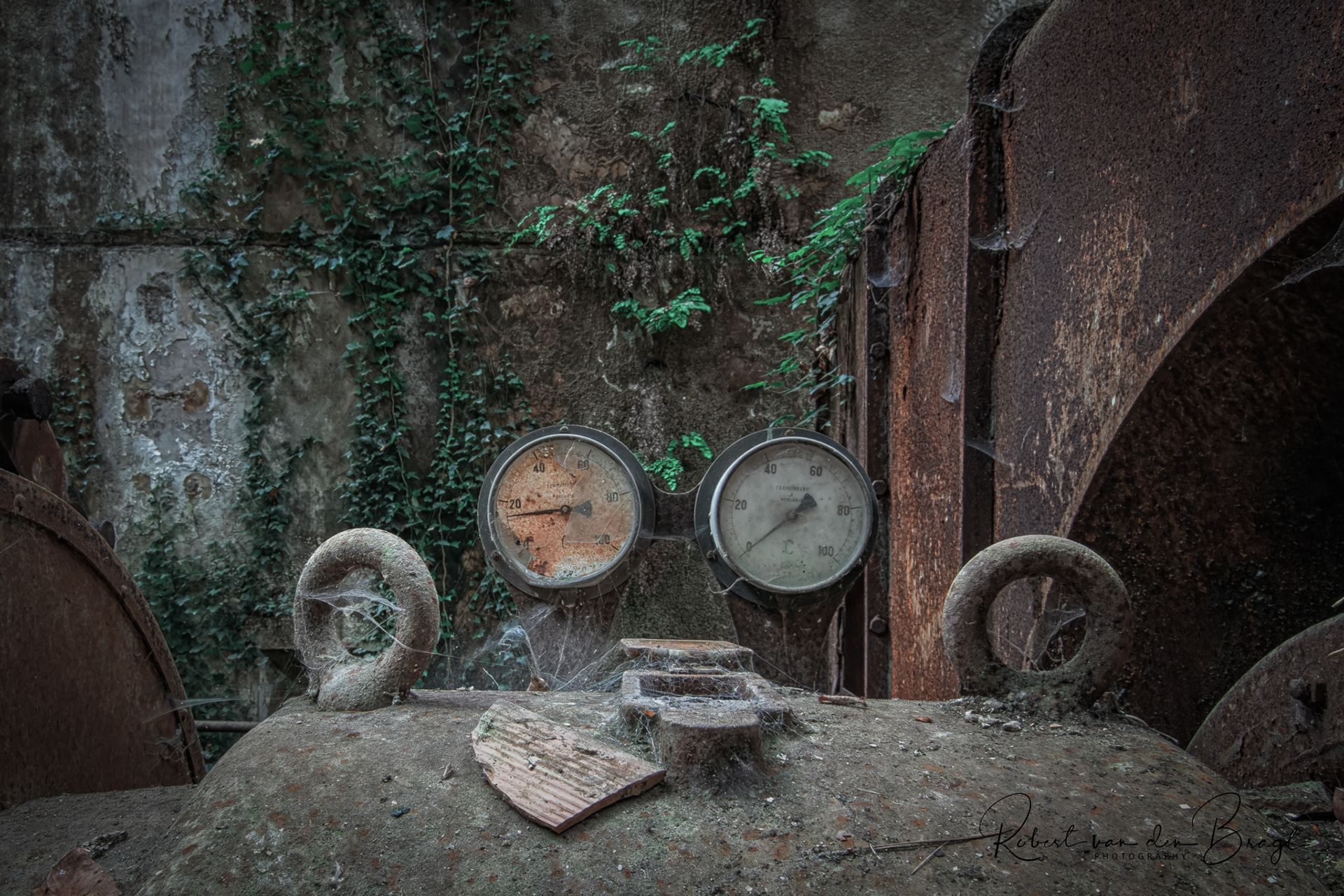
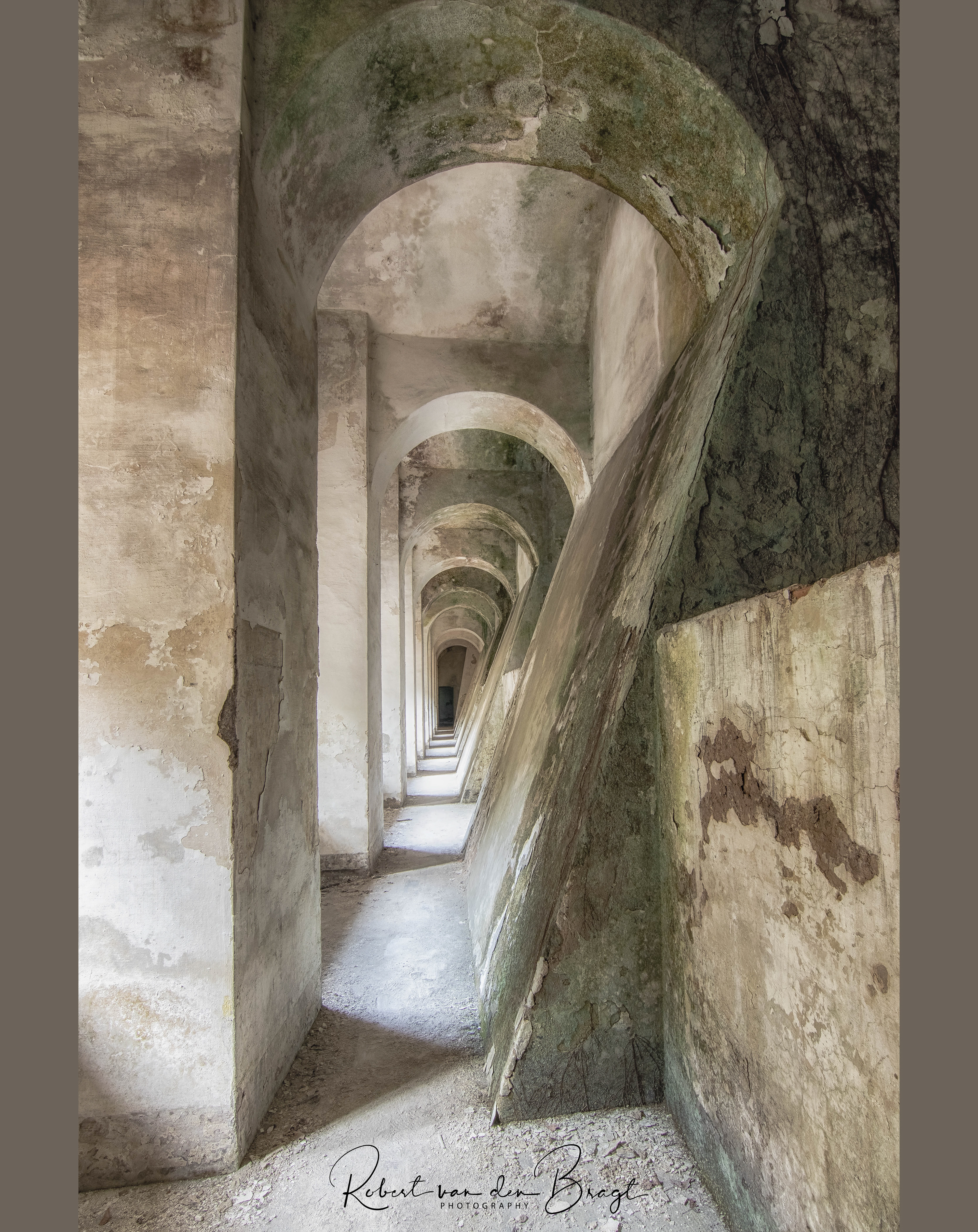
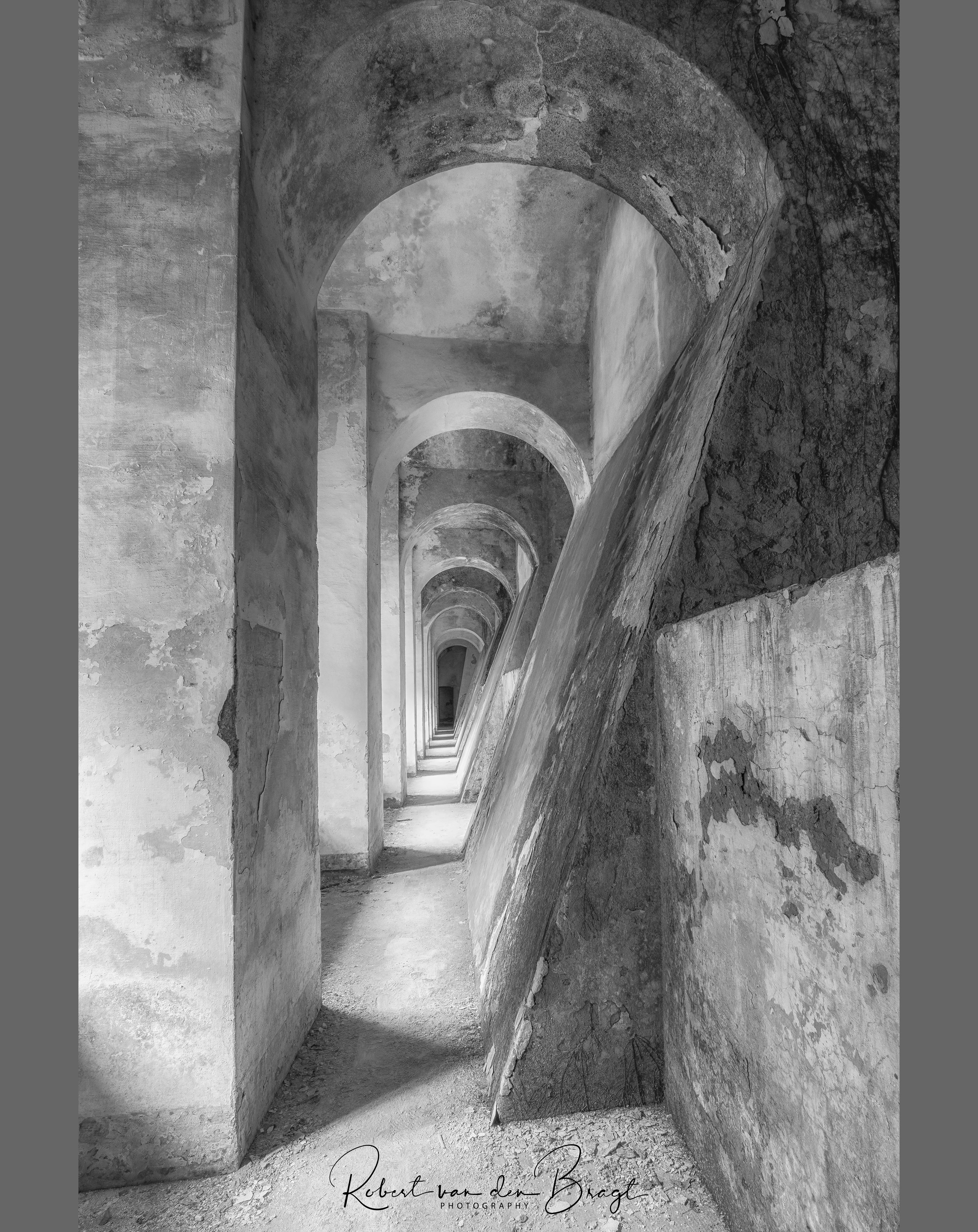
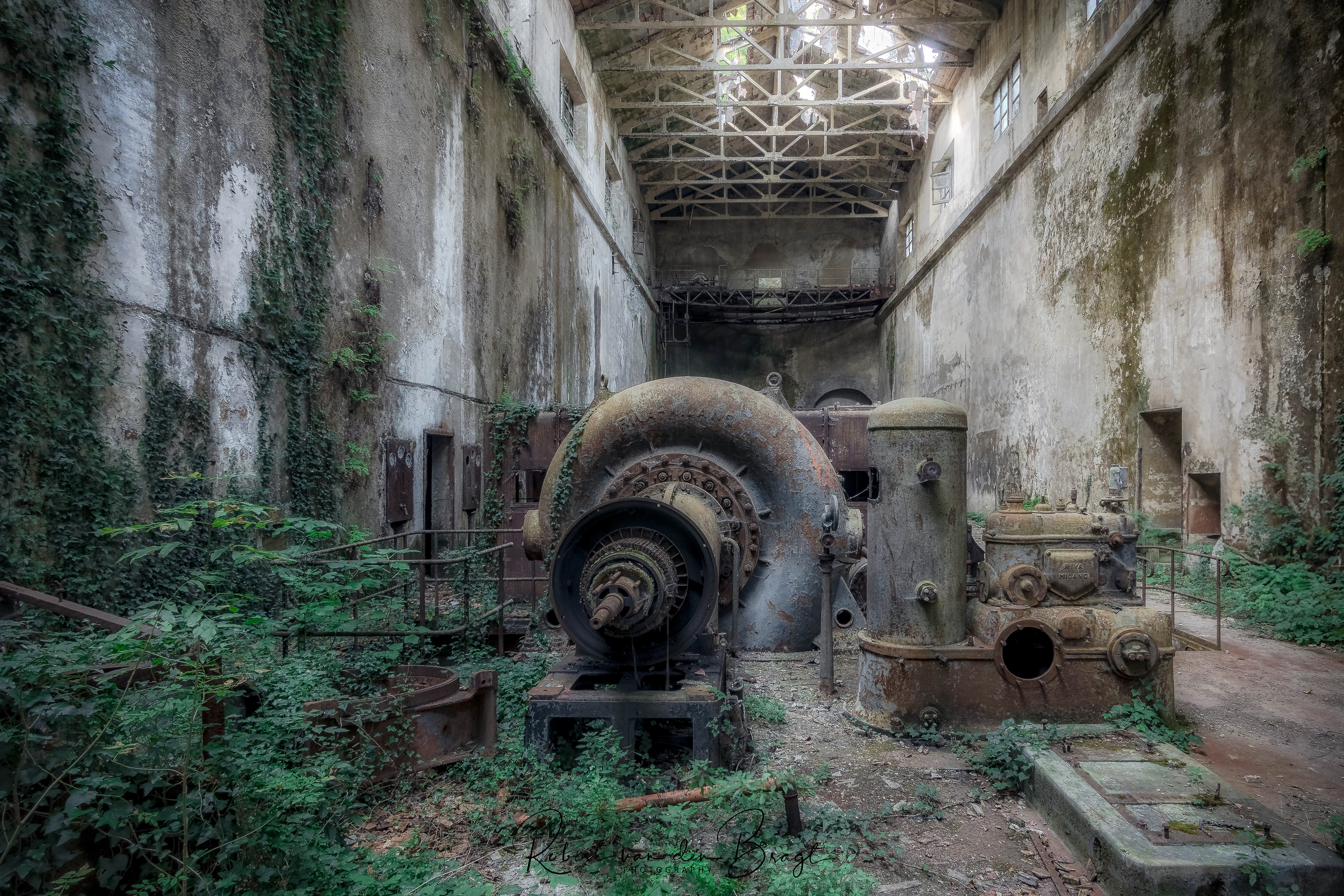
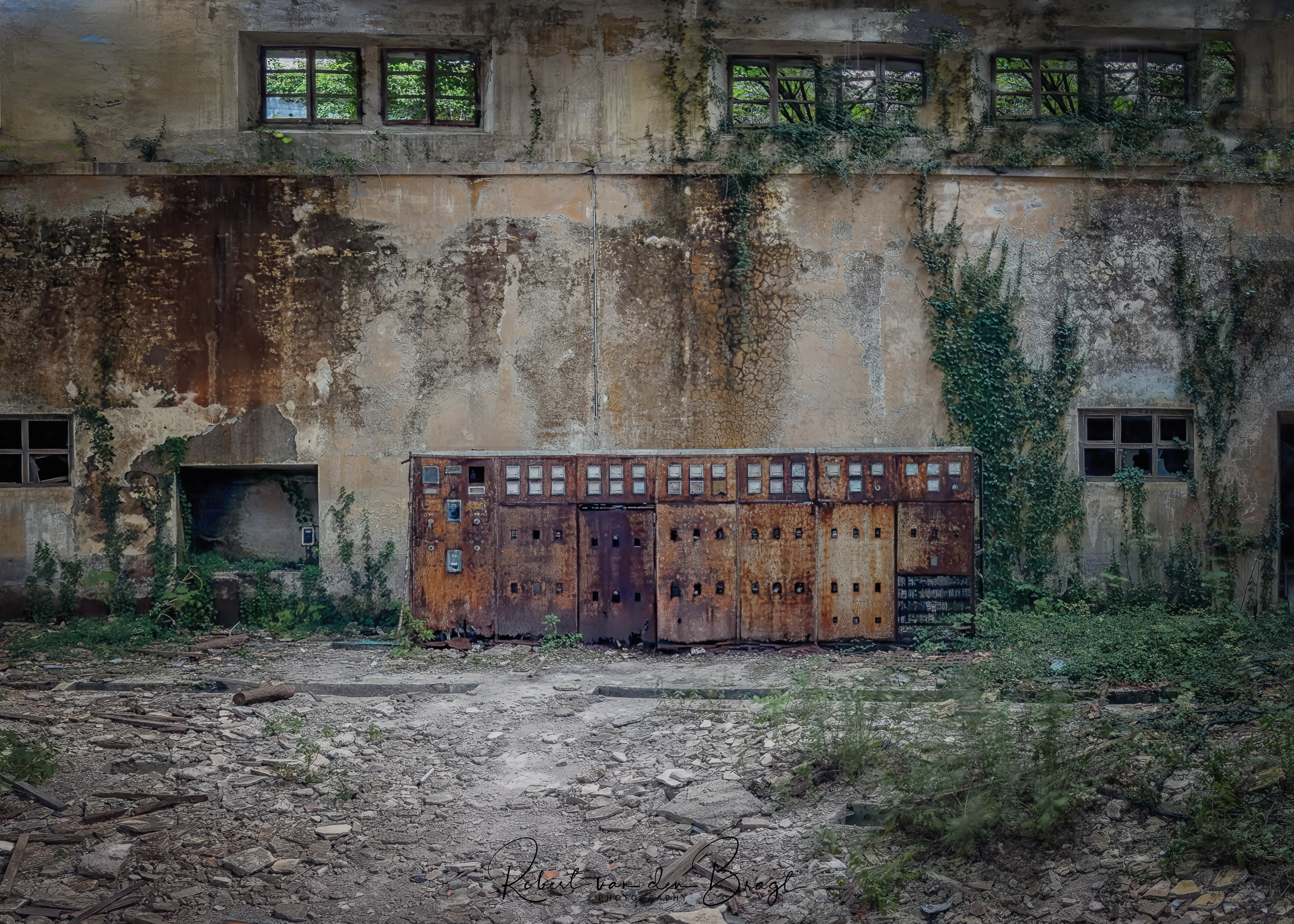
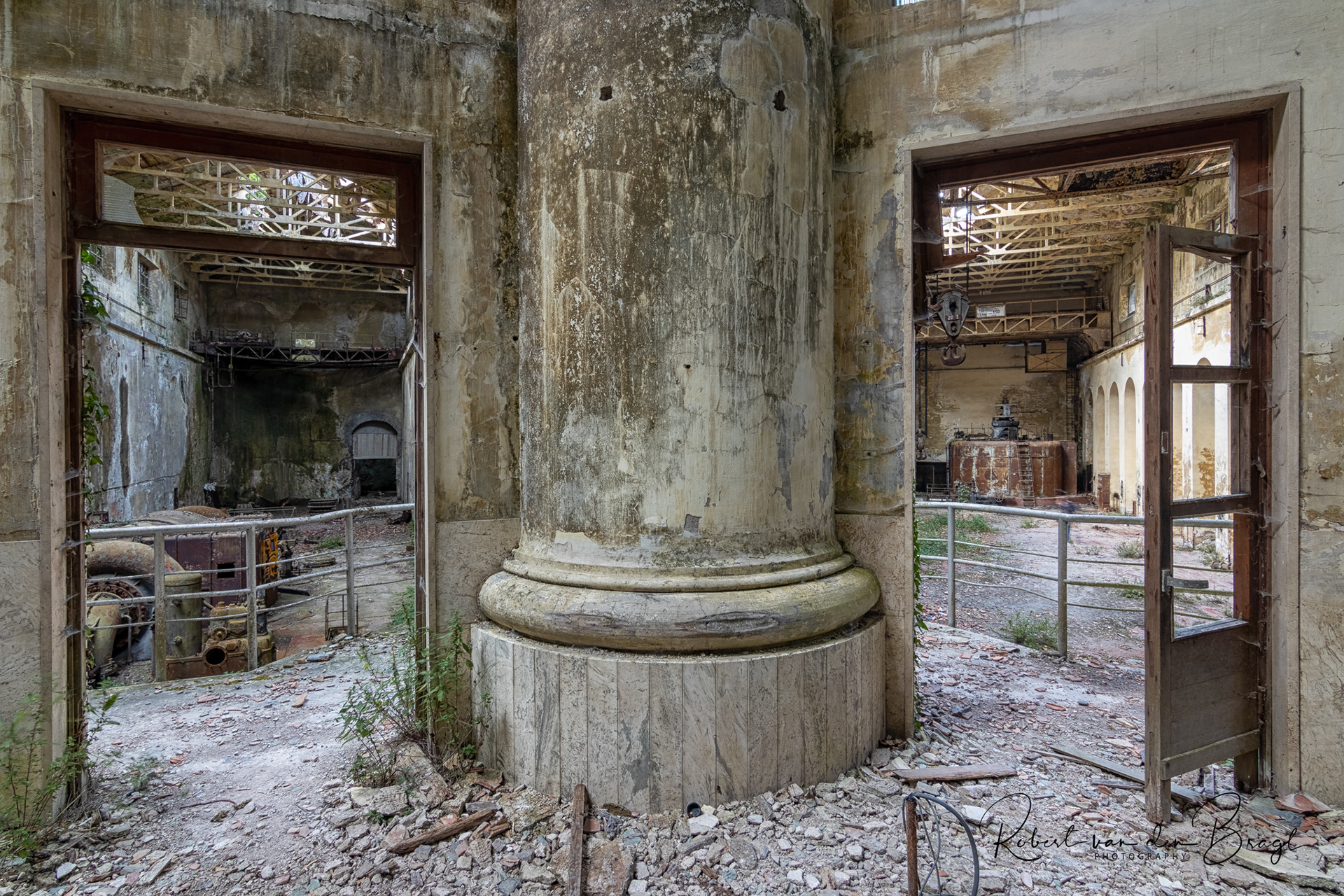
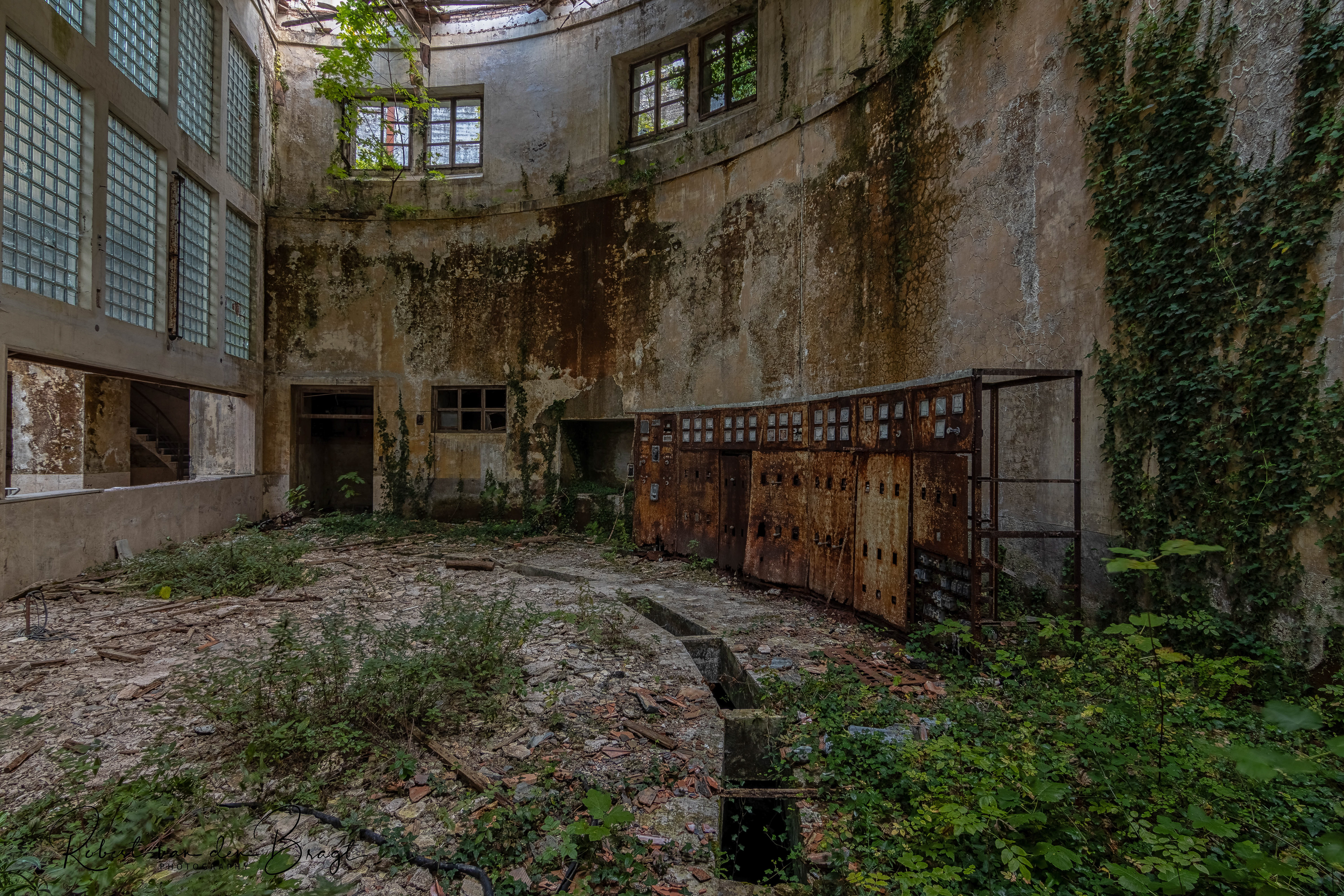
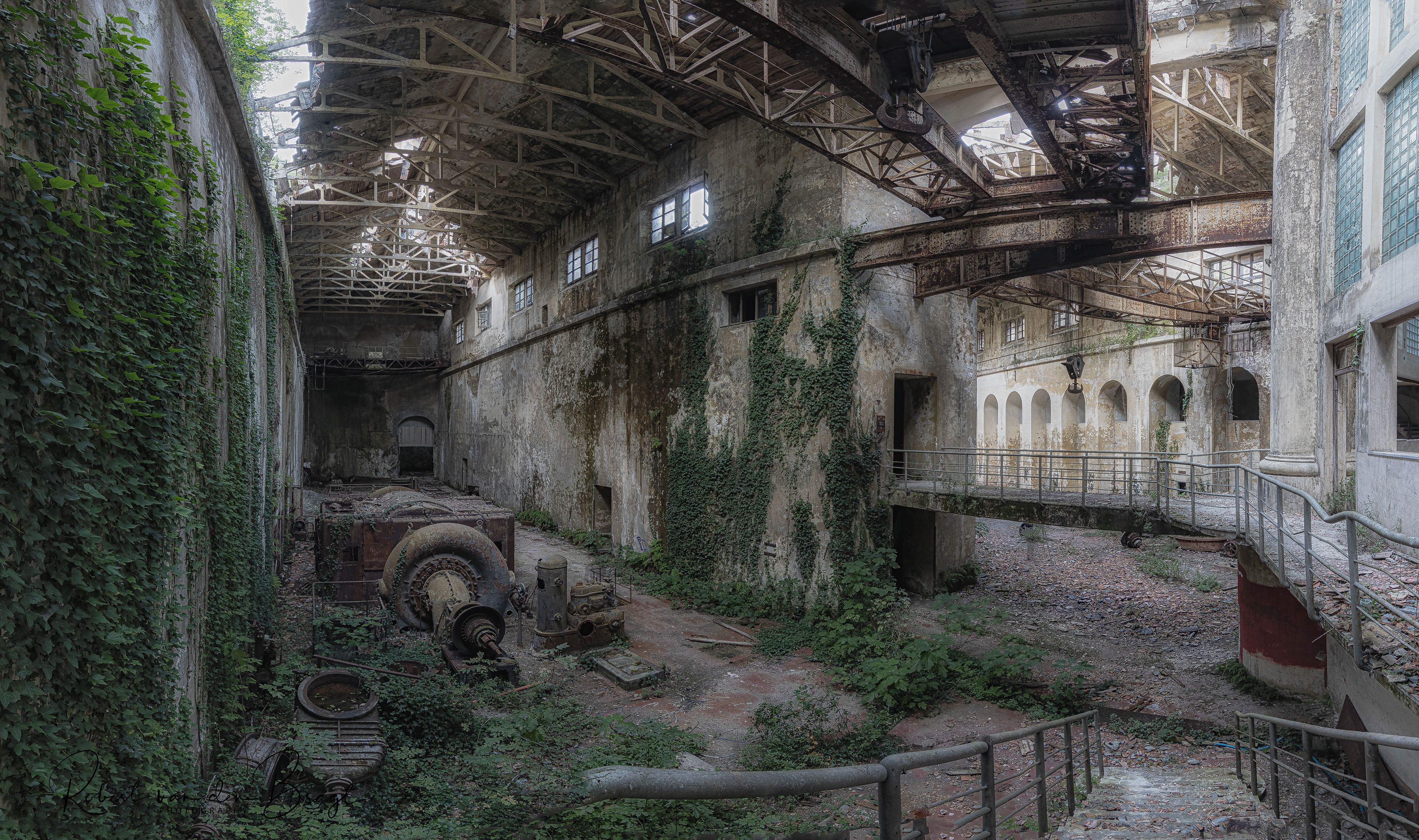
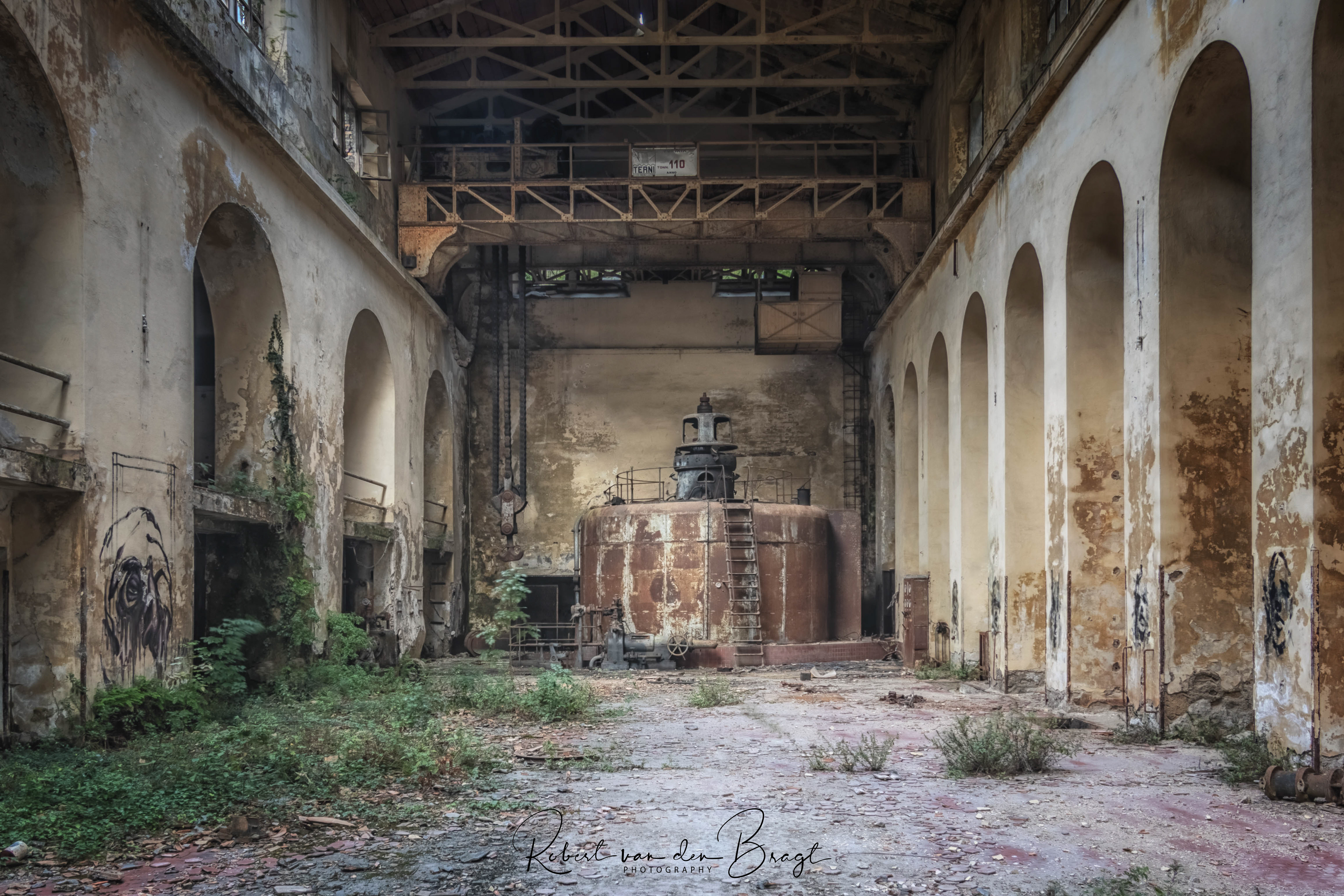


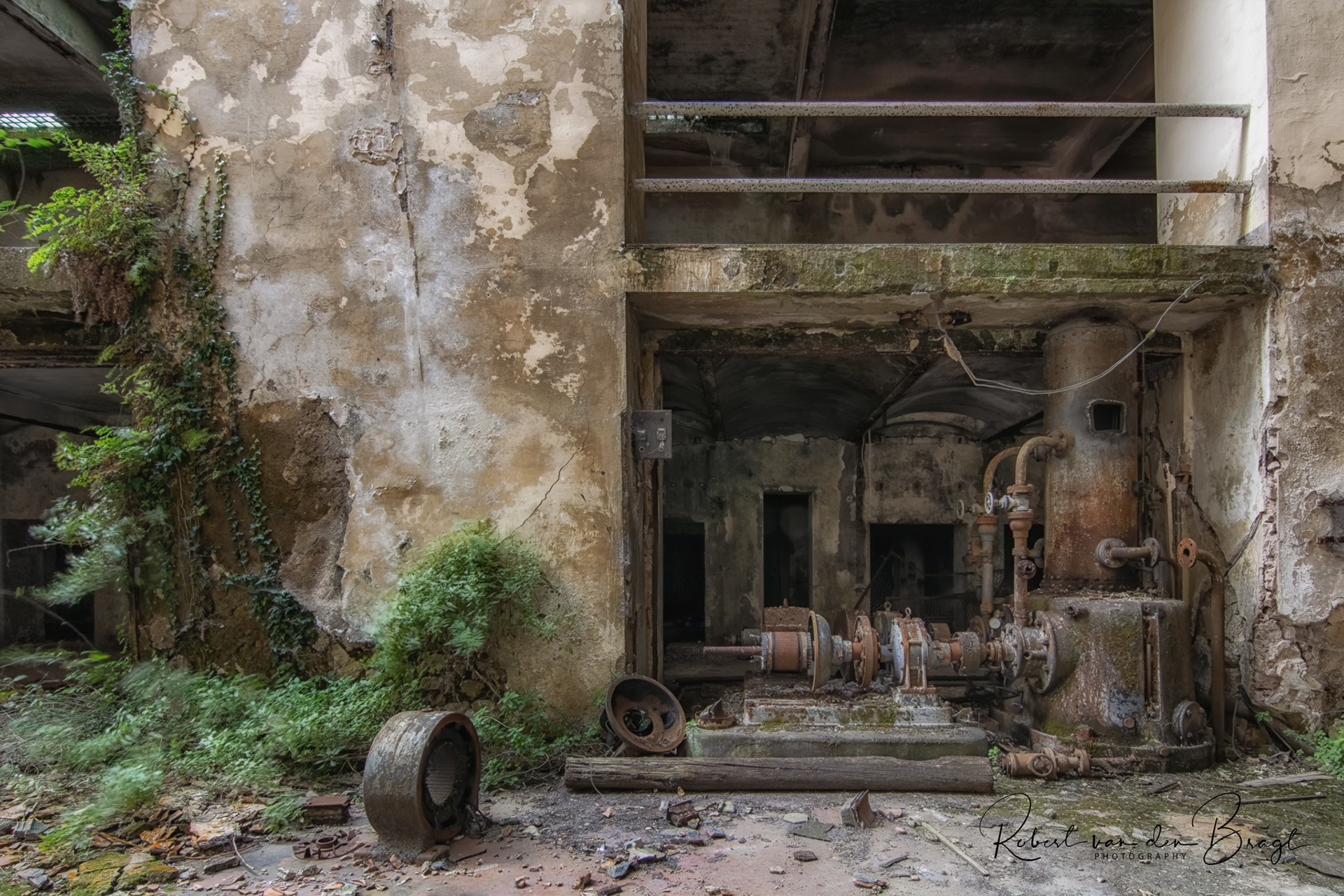
What do you think of this album, please leave a message
